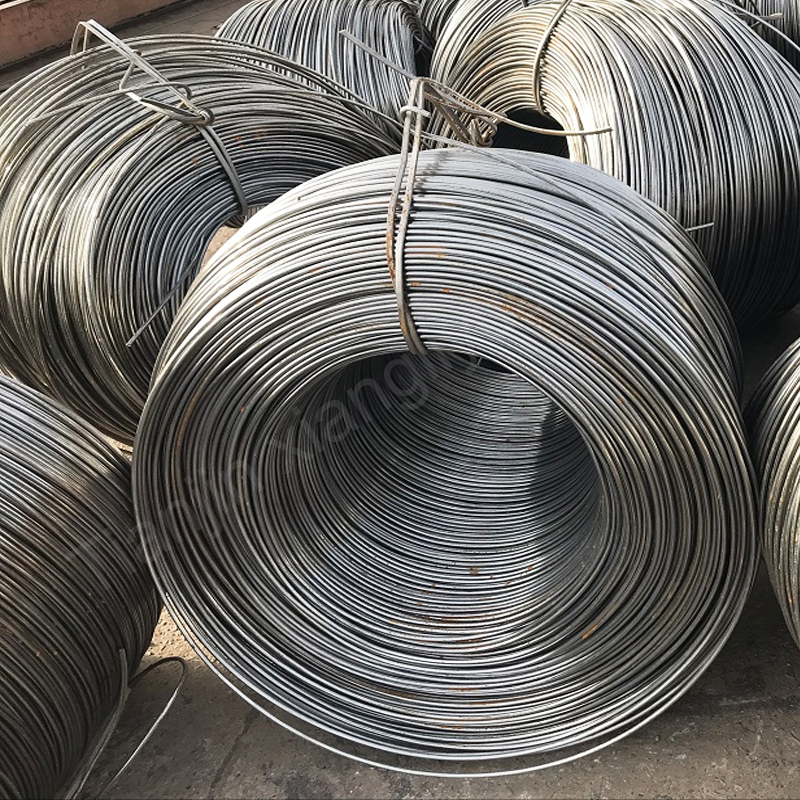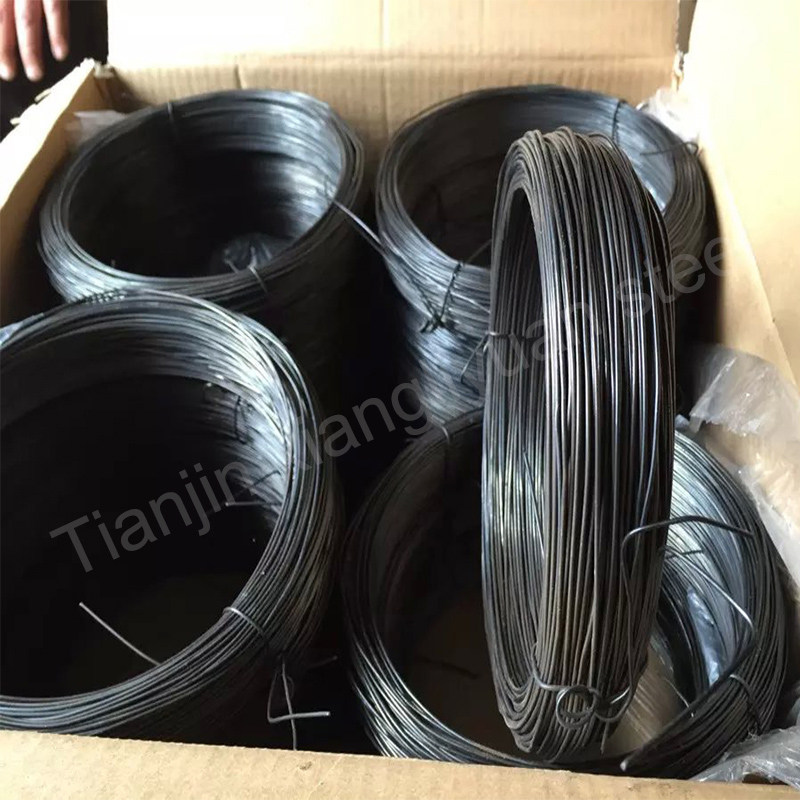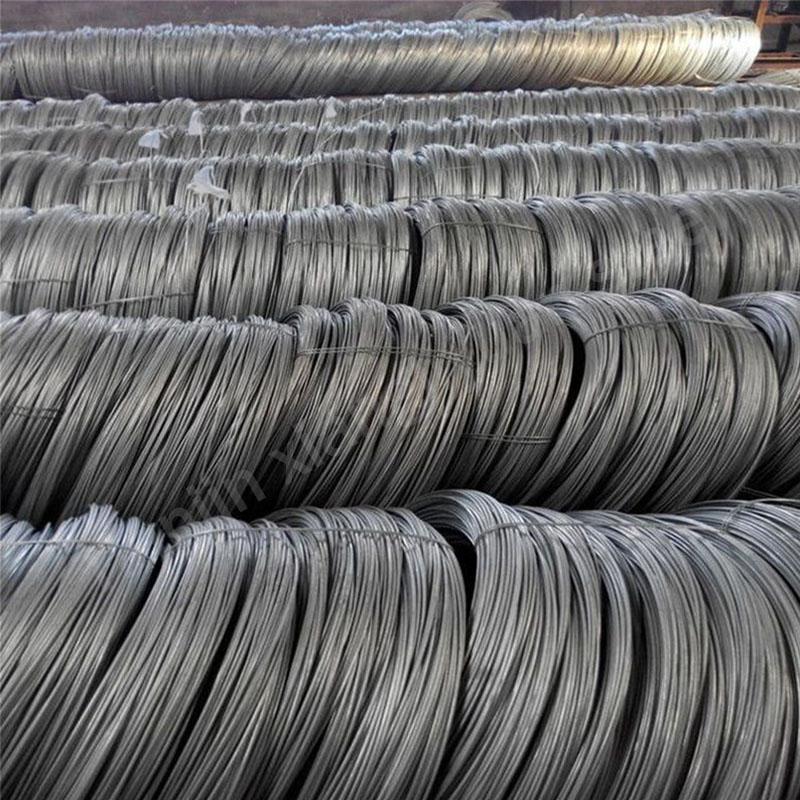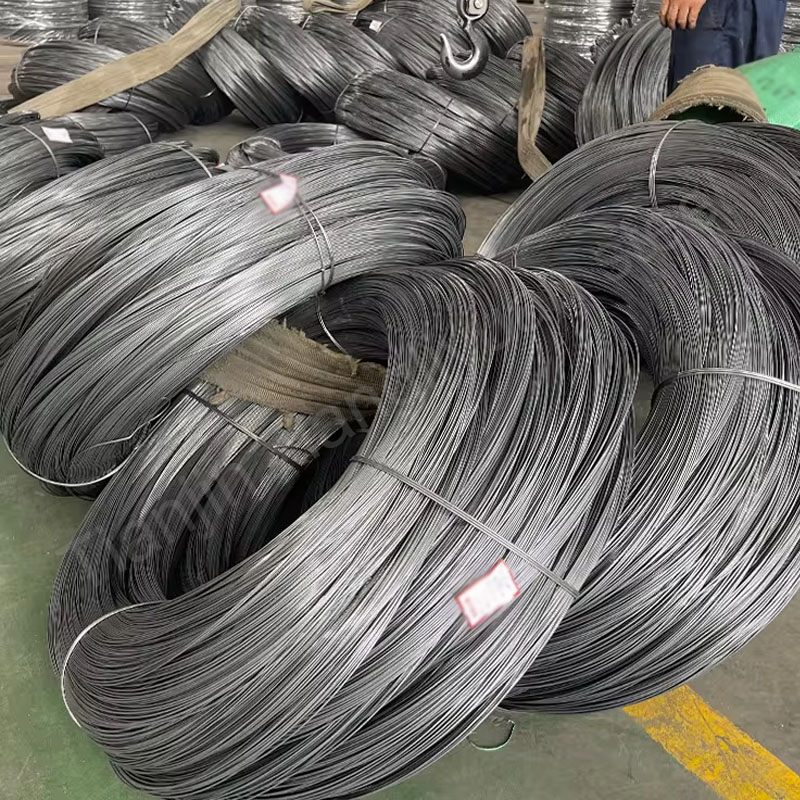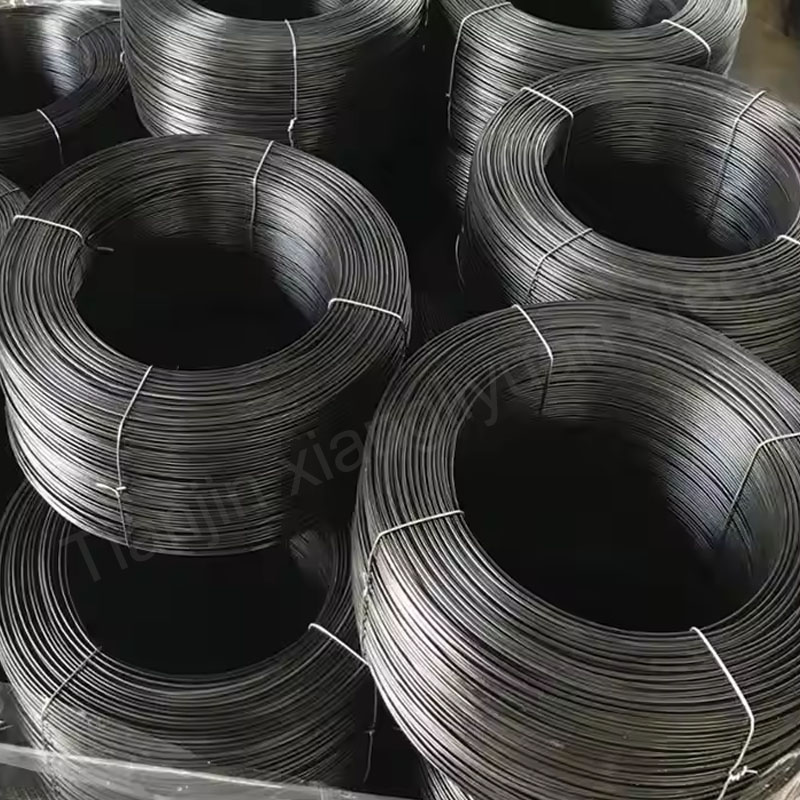The main differences between hot rolled carbon steel wire and cold drawn carbon steel wire are in their processing technology, mechanical properties and appearance. Here are their main differences:
Processing technology:
1. Processing temperature:
Hot rolled carbon steel wire: Processed at high temperature (usually above 1000℃). The steel is heated above the recrystallization temperature to increase its plasticity and reduce deformation resistance. In the hot rolling process, the steel is heated to a red hot state and rolled or calendered.
Cold drawn carbon steel wire: Processed at room temperature without heating. Cold drawing is the process of mechanically stretching steel into a steel wire with a smaller cross-section, which occurs at room temperature.
2. Process steps:
Hot rolled carbon steel wire:
The steel is heated in a high temperature heating furnace.
After heating, it is rolled, and the material is plastically deformed through multiple calendering or rolling.
After cooling, the final steel wire is formed.
Cold drawn carbon steel wire:
The hot rolled steel wire is first pickled to remove oxide scale or other surface treatment.
At room temperature, the wire is drawn multiple times, and the diameter is continuously reduced and the length is increased through a die or roller.
Intermediate annealing may be required to restore the plasticity of the material, and then cold drawing is continued.
3. Changes in material properties:
Hot-rolled carbon steel wire: Due to the processing at high temperature, the material has larger grains and is more tough in terms of mechanical properties, but the surface is rough and the dimensional accuracy is low.
Cold-drawn carbon steel wire: Due to the processing at room temperature, the material grains are refined through multiple drawing, the strength and hardness are improved, but the plasticity of the material is reduced, the surface finish is higher, and the dimensional accuracy is also higher.
4. Cooling after processing:
Hot-rolled carbon steel wire: After high-temperature rolling, the steel is usually cooled naturally, and the cooling rate is slow.
Cold-drawn carbon steel wire: Due to the processing at room temperature, no additional cooling step is required.
Mechanical properties
1. Strength:
Hot-rolled carbon steel wire: Due to the processing at high temperature, the internal grain structure of the material is relatively coarse, and the yield strength and tensile strength are relatively low. Hot-rolled steel wire is usually more suitable for bearing larger plastic deformation and less prone to fracture.
Cold-drawn carbon steel wire: After cold processing, the grain of the carbon steel wire is thinned and the lattice defects increase, so its yield strength and tensile strength increase significantly. The cold drawing process increases the hardness of the steel wire, allowing it to withstand greater loads under the same diameter conditions.
2. Hardness:
Hot-rolled carbon steel wire: Because the internal stress of the material is released during the heating process, the grain structure is relatively relaxed and the hardness is low. The material is softer after hot rolling and is easy to process later.
Cold-drawn carbon steel wire: After cold processing, the hardness of the steel is greatly improved, especially the hardness of the steel wire that has been drawn multiple times. The cold drawing process usually makes the material harder and increases its wear resistance.
3. Plasticity:
Hot-rolled carbon steel wire: It has good plasticity and can withstand larger deformation without breaking. The high temperature treatment in the hot rolling process repairs the defects inside the material, so the hot-rolled steel wire has stronger ductility.
Cold drawn carbon steel wire: As the number of cold drawing increases, the plasticity gradually decreases. Cold working increases the strength of the material, but also reduces the ductility and plasticity of the material, making it brittle and prone to fracture under high stress.
4. Toughness:
Hot rolled carbon steel wire: Due to the high temperature treatment during the hot rolling process, the internal stress of the material is effectively eliminated, the toughness is relatively good, and it can absorb more energy when impacted.
Cold drawn carbon steel wire: Cold working increases the internal stress of the material, reduces the toughness, and makes the material more brittle. Although the strength is improved, it is more likely to break when subjected to impact or severe deformation.
5. Fatigue resistance:
Hot rolled carbon steel wire: It has good fatigue resistance and is suitable for occasions subject to cyclic stress because of its high toughness and plasticity.
Cold drawn carbon steel wire: Because the cold drawing process makes the material brittle, the fatigue resistance is poor, and fatigue cracks are prone to occur under repeated stress.
Surface quality and dimensional accuracy
1. Surface quality:
Hot rolled carbon steel wire: Because it is processed under high temperature conditions, scale and other defects are easily formed on the surface of the steel, and the surface is relatively rough. In addition, due to the high temperature during hot rolling, tiny surface cracks, pores or uneven surface quality may appear. Therefore, hot-rolled steel wire usually needs to undergo subsequent treatments such as pickling and polishing to obtain better surface finish.
Cold-drawn carbon steel wire: Cold drawing is carried out at room temperature, and the steel is not heated, so no oxide scale is formed on the surface, and the surface finish is high. The surface of the cold-drawn steel wire is processed by multiple drawing processes of the die, and usually has a smoother and uniform appearance, which is suitable for applications requiring high surface quality.
2. Dimensional accuracy:
Hot-rolled carbon steel wire: Due to the processing at high temperature, the expansion and contraction of the steel are large, which increases the difficulty of dimensional control. The dimensional tolerance of the hot rolling process is large, so the dimensional accuracy of the hot-rolled steel wire is relatively low, and further processing is required to achieve more precise dimensional requirements.
Cold-drawn carbon steel wire: The cold drawing process is carried out at room temperature, the dimensional change of the steel is small, and the dimensional control is more precise. After multiple drawing, the cold-drawn steel wire can achieve very high dimensional accuracy and small dimensional tolerance, which is suitable for applications with strict dimensional requirements.
3. Subsequent processing requirements:
Hot-rolled carbon steel wire: Due to the rough surface and low dimensional accuracy, hot-rolled steel wire usually requires further processing, such as pickling, wire drawing or polishing, to meet the requirements of accuracy and surface finish.
Cold-drawn carbon steel wire: The cold-drawing process itself can produce steel wire with high surface finish and good dimensional accuracy, so cold-drawn steel wire can usually be directly used in occasions requiring high precision and high surface quality without additional processing.
4. Appearance:
Hot-rolled carbon steel wire: It usually has a dark gray or oxide-skin appearance, and there may be slight defects on the surface. It is not suitable for direct application in products with high appearance requirements.
Cold-drawn carbon steel wire: The surface is smooth and has a metallic luster or bright appearance. It is suitable for products with requirements for appearance and finish, such as springs, precision instruments, etc.
5. Surface defects:
Hot-rolled carbon steel wire: The surface is easily affected by oxidation and high-temperature cracks, and there may be tiny surface flaws or defects.
Cold drawn carbon steel wire: Due to the multiple extrusion and shaping of the surface by the die during the drawing process, the surface defects are few, the smoothness is high, and the surface consistency is good.
In summary, hot rolling is suitable for the production of large-sized steel with high stress, while cold drawing is suitable for small-sized steel wire with high precision requirements and relatively high strength.

